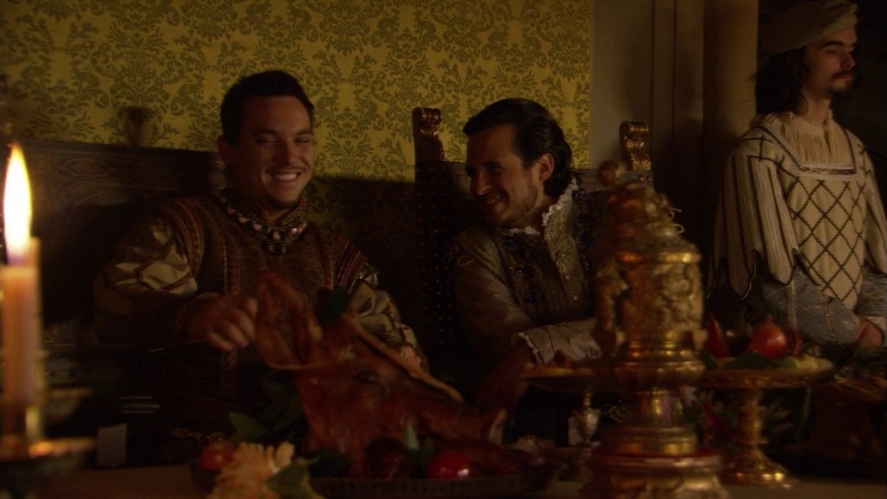Imagine that we are in the city of Calais in Tudor England. This place had a special meaning for King Henry VIII because it was the last remnant of the once substantial English possessions on the continent. King Henry and his beloved Anne Boleyn sailed to Calais to meet with King François I of France, whose support they wanted to secure for their marriage. The path on a ship from Dover to Calais from the shortest crossing point of the English Channel.
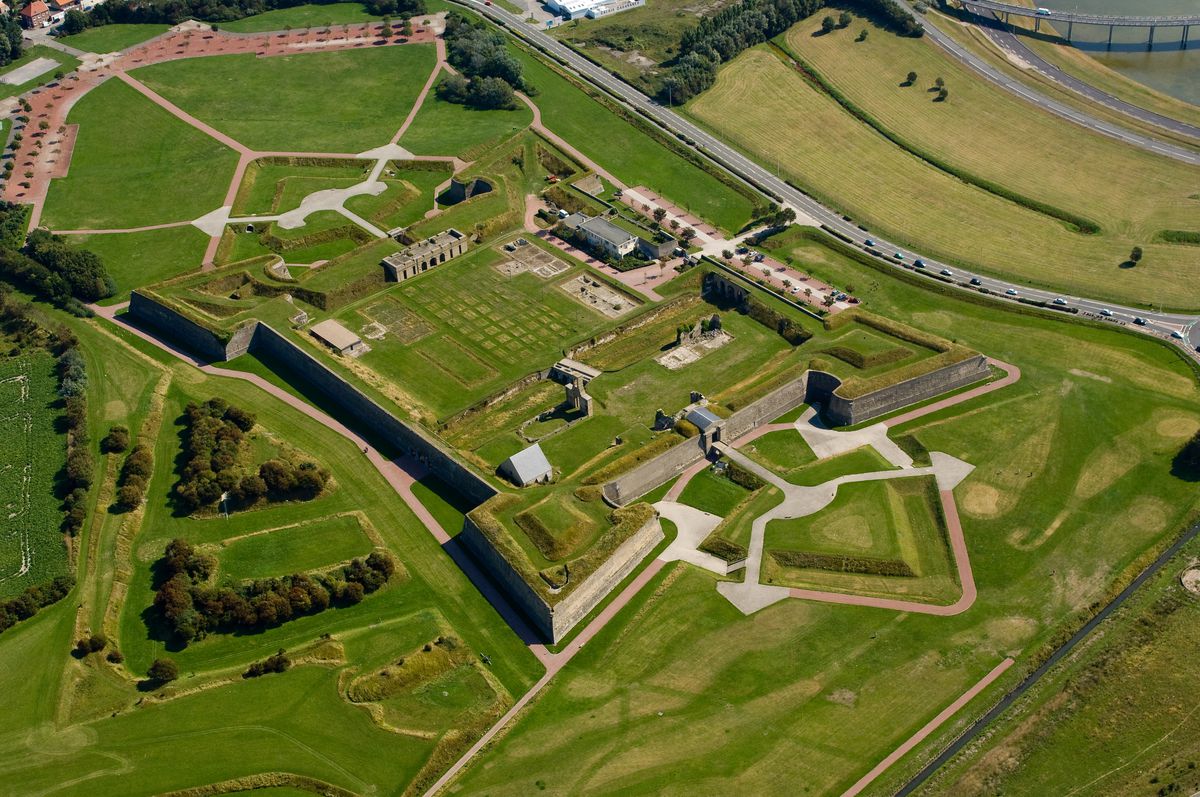

In the 16th century, Calais was both a trading city and a port. Enclosed by thick, fortified walls, the city consisted of narrow streets, lanes, and squares, as well as houses of wealthy local merchants and other ordinary people. There was no title such as Earl or Baron of Calais in the English peerage, but some nobleman governed the local garrison and the city. Between 1533 and 1540, Edward IV’s bastard son – Arthur Plantagenet, Viscount Lisle – served as Lord Deputy of Calais. Nowadays, only a few medieval traces remain, including the Tour du Guet (watchtower), which is the city’s oldest surviving building that is located at the heart of what is now called the Calais Nord quarter. During the reign of Henry VIII, improvements to the city’s defense system were completed in the 1540s.
Let’s remember what preceded Anne and Henry’s arrival in Calais. In June 1532, England and France had signed an alliance treaty – one of the many meaningless documents signed between England and France during the reigns of François I and Henry VIII. Expecting François’ support in getting his matrimony with Catherine of Aragon annulled, Henry had negotiated with François to meet at Calais in autumn of 1532. The agenda had been defined: discussions of Henry’s remarriage to Anne Boleyn and the two countries’ policies against their common enemy – Emperor Charles V. In August, Henry and Anne had gone on a progress with his court through the English southern counties, but the monarch had been compelled to shorten their journey due to the population’s hostility towards his beloved. The people had reportedly lined the roadsides and hurled verbal humiliations at Anne, appealing to their sovereign to take Catherine back as his wife. Around this time, Anne had discovered a book of prophecies with a picture depicting her headless in her apartments at Whitehall, which had been left by one of her enemies, but Anne had dismissed it as nonsense.
Anne told her maid of honor, Lady Anne Saville, that she was determined to marry the ruler:
‘That my issue may be royal, whatever will become of me.’

On the 22nd of August 1532, Archbishop Warham had died, and the king appointed Thomas Cranmer Archbishop of Canterbury. Cranmer was backed by the Boleyn faction and had a genuine affection for Anne. On the 1st of September, the monarch had bestowed upon Anne a peerage in her own right in an elaborate ceremony at Windsor Castle. Anne had been created Marquess of Pembroke, using the male style of this title that had once belonged to Henry’s Tudor ancestors. Anne’s status had been enhanced for special purposes – for the couple’s French visit and to set the stage for Henry’s future marriage not to an English earl’s daughter, but to a high-ranking peeress. Then Anne had openly assembled a court around her, but the old English nobility were not its members, resenting her quietly. Among them, there were her brother – George Boleyn, Viscount Rochford, – his wife Jane Boleyn née Parker, Sir Francis Bryan, William Brereton, Sir Thomas Wyatt who was her old admirer, Sir Francis Weston, and a few others.
Even before their departure for Calais, the matter of which royal lady would receive Anne during the visit had been a subject of debates between two kings. Henry had refused to see Queen Eleanor, who was the emperor’s elder sister and Catherine’s niece; Eleanor had categorically denied the possibility of going to Calais, which was shameful in her opinion. To Anne’s chagrin, Queen Marguerite of Navarre (Marguerite d’Angoulême) had not consented to come either: despite Margot’s affection for the English lady who seems to have once been part of her literary circles, Marguerite could not associate herself with the Scandal of Christendom. François had suggested that his maîtresse-en-titre – Anne de Pisseleu d’Heilly, Duchess d’Étampes – would greet Anne in Calais, but Henry had protested. While Henry viewed Anne as his bride, François and the rest of Catholic Europe saw her as the Tudor ruler’s mistress. It had been decided that Anne would remain in Calais while Henry would meet with his French counterpart in Boulogne. On the 7th of October, Henry and Anne had begun their voyage to Dover with their vast train.
On the 10th of October, the king and his beloved had sailed to Calais on the ship called ‘the Swallow.’ Such a non-romantic name for the very vessel that had carried Anne and Henry to their “ally”! Superstitious minds could have perceived it as a sign that either Henry’s passion or his huge ego would eventually swallow Anne completely. The journey took 7 hours; they had been welcomed in Calais by civic dignitaries and the Governor, and went to the Church of St Nicholas, where they listened to a Mass. The city was not a new place for Anne: she had been there before at least once when she had crossed the Channel on the way back to England in the early 1520s; a woman who had learned the French manners and missed the sophisticated splendor of the Valois court. The people’s greetings in Calais must have been such a stark contrast to the hostility from the English folk which Anne had experienced during the royal progress a few months ago. Anne de Montmorency, Constable of France, sent to the couple many gifts of food.
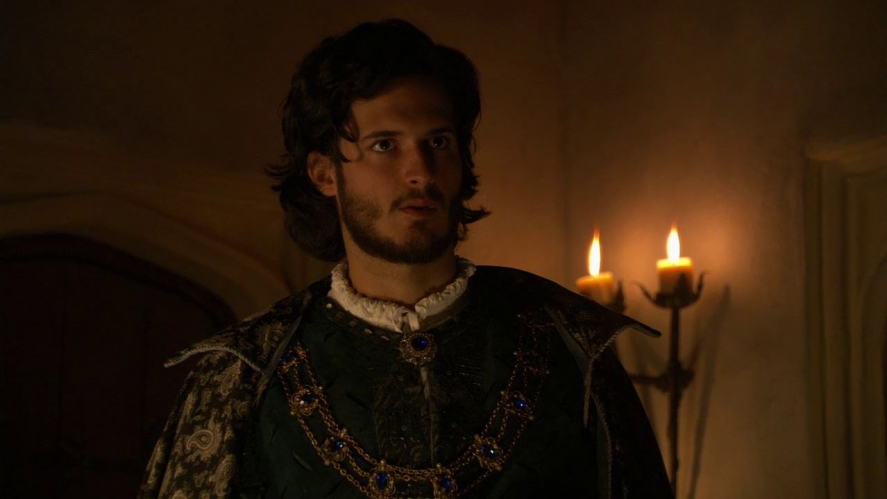
In Calais, King Henry and Anne both resided at the Exchequer Palace. It is remarkable that their bedrooms were connected, so some historians think that the couple had already been intimate at the time, and that Anne had surrendered to Henry’s passions after her ennoblement. Personally, I do not think so: I believe Anne and Henry became lovers shortly after their visit to Calais. After a week of celebrations, the Tudor monarch traveled to Boulogne to meet with King François I, while Anne awaited him in Calais. François organized a series of opulent banquets while his English counterpart was his guest in Boulogne. François set up his court in the Basilica of Notre-Dame de Boulogne, where Henry and François every day heard the Mass in separate chapels and feasted splendidly in the refectory, adorned with tapestries portraying the story of Scipio Africanus. Henry’s chambers were swathed with cloth of silver and tapestries portraying scenes from Ovid’s Metamorphoses. Much to Henry’s jealousy, the French courtiers were dressed in more eccentric and expensive clothes, and François even gifted to Henry a crimson satin doublet encrusted with pearls beneath a gown of white velvet embroidered in gold.
During Henry’s sojourn in Boulogne, the two monarchs talked about a joint crusade against the Turks in the East, which must have been said by each of them as a joke. They also discussed the Great Matter, and François promised to use his influence over the Pope to have Henry divorced from Catherine of Aragon – a promise that the Valois ruler could not keep, and François must have known that in advance. There was no dancing as no women were present, and to compete with his rival, Henri lavished on him and his two eldest sons – Dauphin François and Prince Henri, Duke d’Orléans (the future Henri II of France) gifts, including some fine horses, falcons, and jewels.
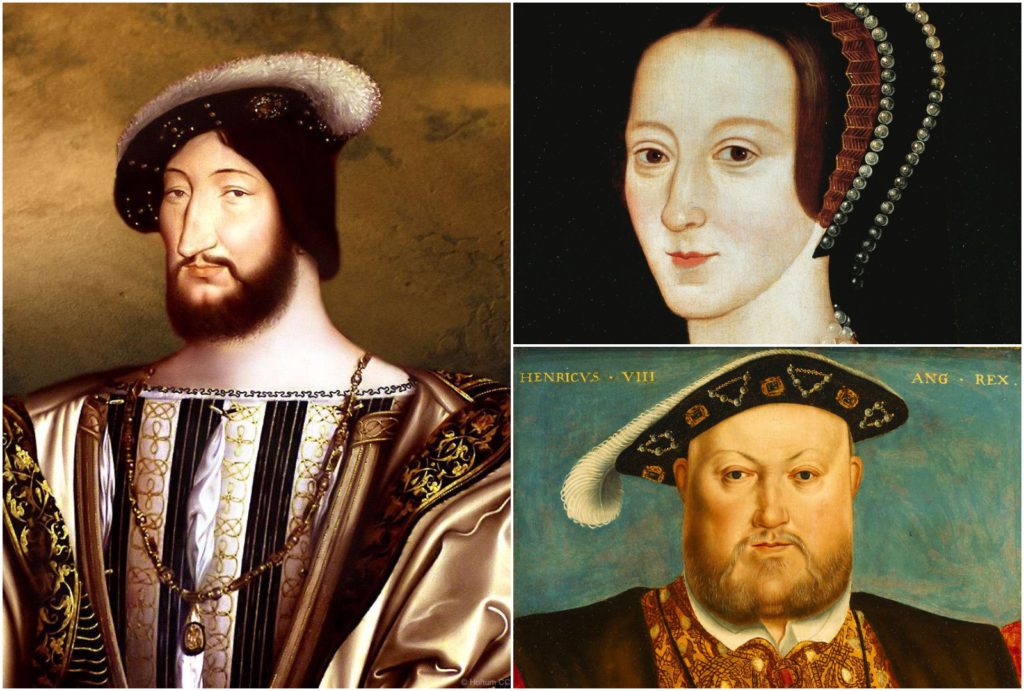
On the 24th of October, François invested the Duke of Norfolk and the Duke of Suffolk with the Order of St Michael. Henry and François arrived at Calais with all pomp on the 25th of October 1536. According to the Tudor chronicle Edward Hall, François had a train of 12 hundred people and many horses. Near Calais, they were met by Henry FitzRoy, Duke of Richmond and Somerset (Henry’s illegitimate son), and a group of bishops and aristocrats, including the Earl of Wiltshire and the Viscount Rochford. The kings competed in hospitality and extravagance. Henry escorted François to his chambers at the headquarters of the Staple Inn, which had been made magnificent at the expense of Calais merchants; even more than 2,000 beds and stabling for 2,000 horses had been prepared for the French king’s retinue. Edward Hall described François’ rooms:
“The Kyng of England brought the French Kyng to his lodgyng, where his chamber was hanged with so rich verdore, as hath not been seen, the Thc firste ground of it was gold and damaske, and all ouer the tuftes and flowers, were of Satten chamber. Silke and Siluer, so curiously wrought that they seined to growe, euery chamber was richer, and other: the second chamber all of Tissue, with a clothe of estate of nedle worke, set with great roses of large pearle. The third was haged with veluet, vpon veluet pirled grene and crimosyn, and embraudered ouer with braunches, of flowers of gold bullion, and garnished with annes and beastes of thesame gold, set with pearle and stone. If the Frenche Kyng made good chere to the Kyng of Engiande, and his trayne at Bulleyne, I assure you he and his trayne, were requited at Caleis, for the plentie of wylde foule, venison, fishe, and all other thynges whiche were there, it was marueill to see, for the Kynges officers of England, had made preparacion in euery place, so that the Frenchemenne were serued, with suche multitude of diuerse fishes, this Fridaie and Sater.”
Anne Boleyn was nowhere to be seen. King François sent to the Marquess of Pembroke an expensive diamond via the Provost of Paris. The Staple Inn became the scene of Anne’s grand presentation to the Valois monarch at a masque on the 27th of October 1532. In the evening, at the two rulers dined together in the spacious chambers, illuminated by a profusion of gilded candelabrum and candles, and decorated with gold wreaths and precious stones. A huge variety of victuals was served for them. The merry conversation of the two kings was interrupted by the appearance of Anne and 7 other ladies, including Lady Mary Howard and Lady Jane Rochford, all masked and garbed in eccentric gowns of cloth of gold and crimson tinsel with gold laces. They danced enticingly in front of the monarchs who continued drinking and eating jocundly.
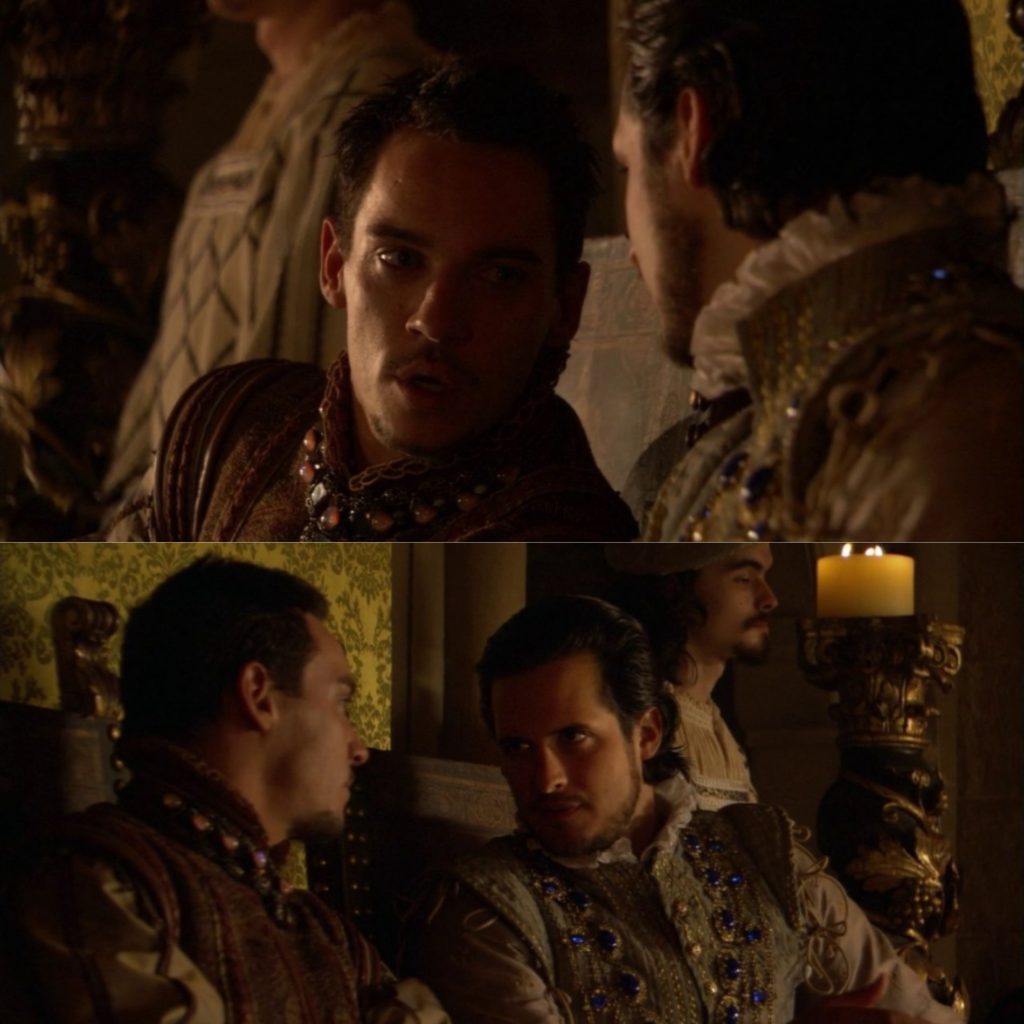
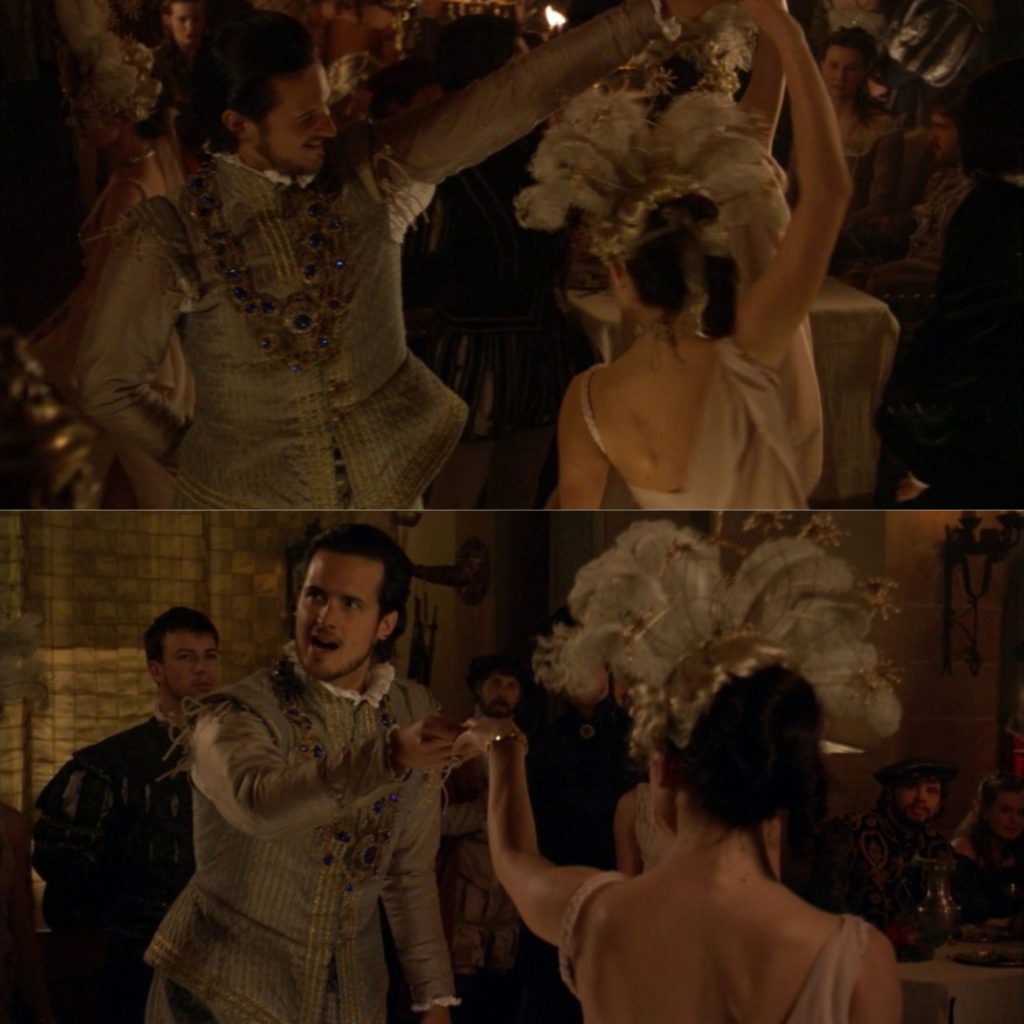
A masked and elated Anne approached King François with an audacity that was an organic part of her character. François was encouraged to dance with her by Henry. It is interesting that despite his wife’s absence, King Henri II of Navarre attended the event, perhaps because of his interest in new religion despite his Catholic faith, or maybe because he was François’ friend and another monarch, who, unlike Marguerite, could come to Calais. The other women invited men in attendance, including King Henry. After the dance was over, Henry approached his counterpart’s partner and took off her mask: to his astonishment, perhaps a fake one because François could have guessed the identity of his partner, François stood near the bewitching Marquess of Pembroke. Shortly afterwards, Anne and François talked in private for about an hour or so, and she must have sought reassurance that the King of France would support her union with Henry. After the banquet, the Tudor monarch escorted the Valois ruler to his apartments. Anne and Henry were both exhilarated, perhaps believing that they really obtained another ally.
Edward Hall wrote of Anne’s appearance in front of the two monarchs:
“After supper came in the Marchiones of Penbroke, with. vii. ladies in maskyn apparel of strautige fashion, made of clothe of gold, compassed with crimosyn tinsell satin, owned with clothe of siluer, liyng lose and knit with laces of gold: these ladies were brought into the chamber, with foure damoselles apparele in crimosin satlyn, with tabardes of fine cipres: the lady Marques tooke the Frenche Kyng and the Countes of Darby, toke the Kyng of Nauerr, and euery Lady toke a lorde, and in daunsyng the kyng of Englande, toke awaie the ladies visers, so that there the ladies beauties were shewed and after they had daunsed a while they ceased, and the French Kyng talked with the Marchiones of Penbroke a space, then he toke his ieaue of the Indies, and the kyng escorted hym to his lodgyng: the same night the Duke of Norffolke feasted all the nobles of Fraunce, beyng there in the castle of Caleis, with many goodly sportes and pastymes.”

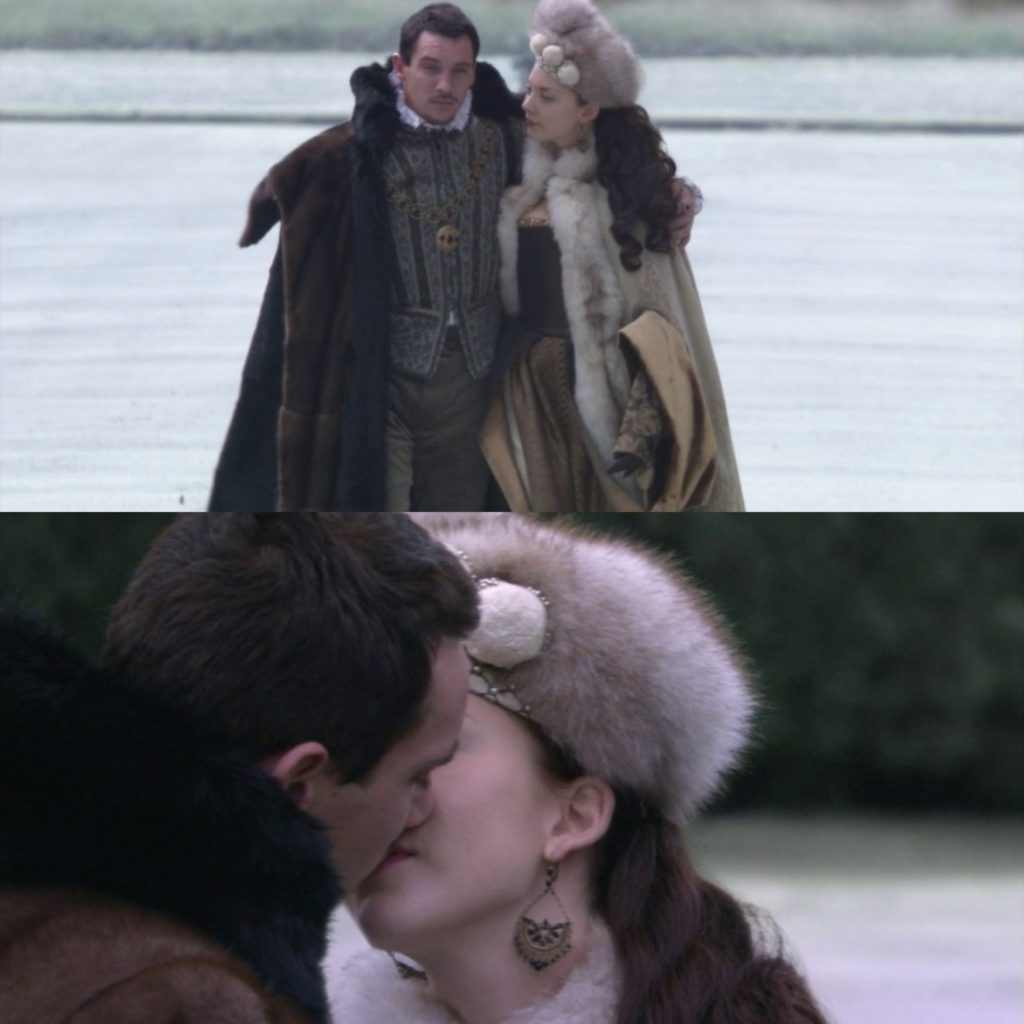
King Henry made Anne de Montmorency, as well as Philippe de Chabot, Admiral de Brion, and several other French courtiers Knights of the Order of the Garter. On the 29th of October, Henry accompanied François outside of Calais, and they both appeared cheerful and friendly with each other. It was all an illusion because these two monarchs could never be friends – they were rivals from the moment of François’ ascension in 1515 and until their deaths in 1547. I wonder whether Henry and Anne, who were both clever people, realized that François, the French Catholic ruler and His Most Christian Catholic Majesty, could never support them without at least taking a risk of being excommunicated by the Vatican. It was all politics for François who hated Emperor Charles V for compelling reasons and naturally sought allies against his life-long nemesis, and it was not hypocrisy on his part to try and help Henry resolve the question with the Vatican. François indeed wanted to ask some of his cardinals to speak to Pope Clement VII, but nobody would have attained anything because Charles V had Clement in his complete control after the Sack of Rome of 1527. I do not blame François: politics and kingship were and are never entirely congruent with good intentions and wishes of someone who would want to do something, but could not act so due to political and religious limitations.
The English court stayed at Calais for some time, with Henry and Anne reveling in the days of their triumph and enjoying what can be called their honeymoon. The Milanese ambassador to the French court, who saw the couple together, was certain that they had already had a clandestine marriage, although it seems that their wedding would take place later – shortly after their return to English soil. Because of autumn storms, Henry and his sweetheart delayed their departure and finally sailed on the 12th of November 1532, and in 2 days, they landed at the port of Dover. The couple then journeyed through Kent and arrived at Eltham Palace within the royal borough of Greenwich on the 24th of November. Anne’s doomed path to queenship was only starting…
All images are in the public domain.
Text © 2020 Olivia Longueville

